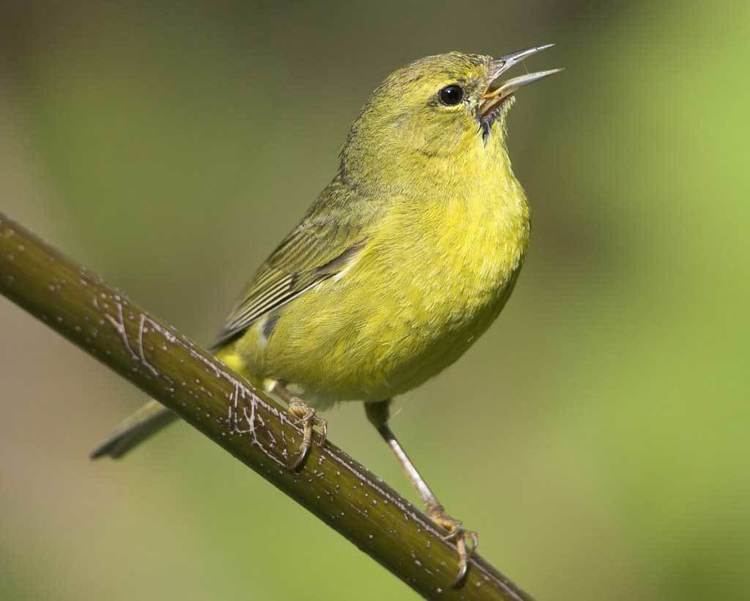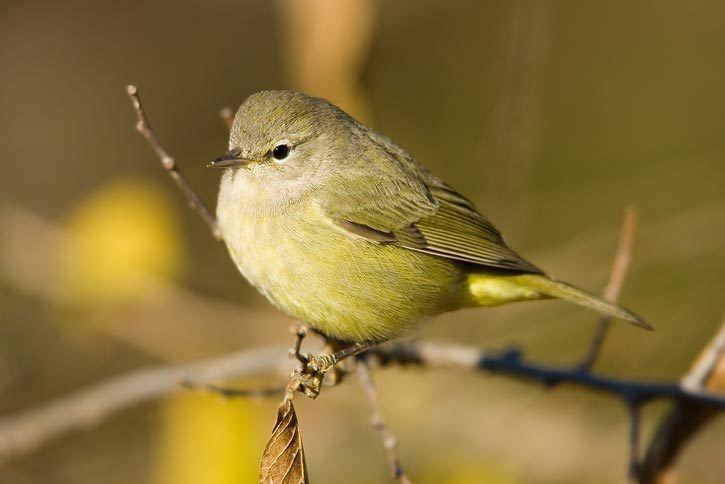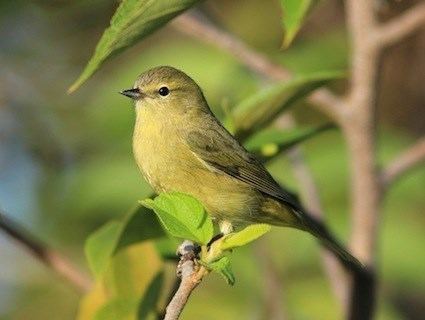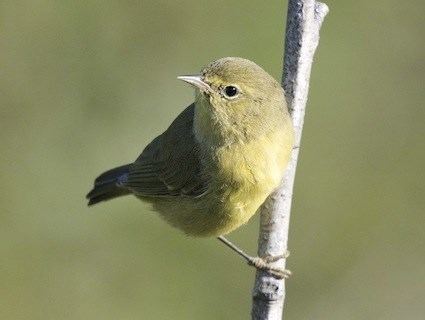Order Passeriformes Genus Oreothlypis Higher classification Vermivora | Phylum Chordata Family Parulidae Scientific name Vermivora celata Rank Species | |
 | ||
Similar New World warbler, Bird, Wilson's warbler, Yellow‑rumped warbler, Nashville warbler | ||
Orange crowned warbler feeding on the ground
The orange-crowned warbler (Oreothlypis celata) is a small songbird of the New World warbler family.
Contents
- Orange crowned warbler feeding on the ground
- Orange crowned warbler trilled song
- Description
- Life history
- References
Orange crowned warbler trilled song
Description

These birds are distinguished by their lack of wing bars, streaking on the underparts, strong face marking or bright colouring, resembling a fall Tennessee warbler and a black-throated blue warbler, both of which are also members of the New World warbler family. The orange patch on the crown is usually not visible. They have olive-grey upperparts, yellowish underparts with faint streaking and a thin pointed bill. They have a faint line over their eyes and a faint broken eye ring. Females and immatures are duller in colour than males. Western birds are yellower than eastern birds.
Life history
Their breeding habitat is open shrubby areas across Canada, Alaska and the western United States. The nest is a small open cup well-concealed on the ground under vegetation or low in shrubs. The female builds the nest; both parents feed the young.
These birds migrate to the southern United States and south to Central America.

They forage actively in low shrubs, flying from perch to perch, sometimes hovering. These birds eat insects, berries and nectar.
Four to six eggs are laid in a nest on the ground or in a low bush.

The song of this bird is a trill, descending in pitch and volume. The call is a high chip.
